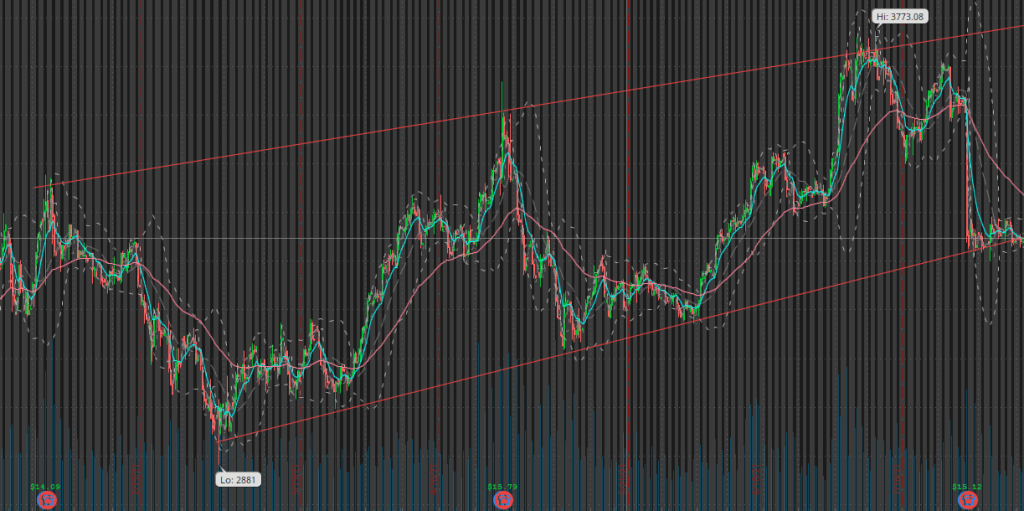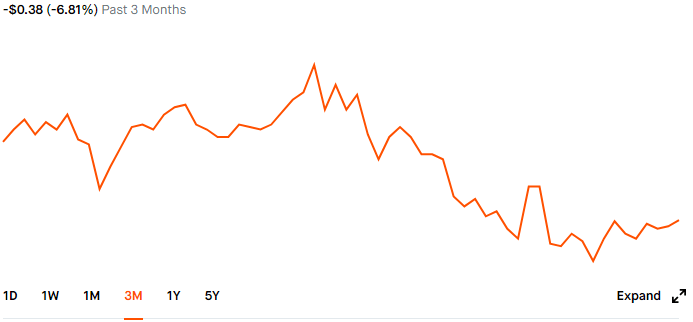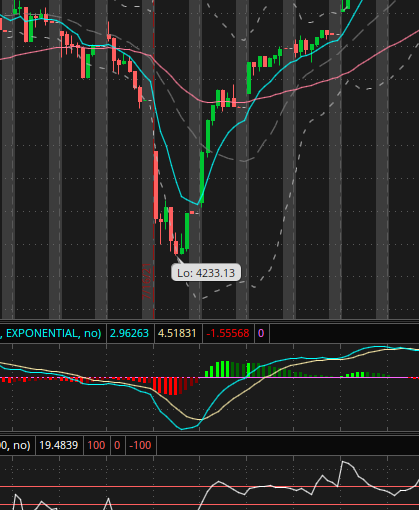Stock Strategy Made For Me, By Me
In my last post, I discussed different strategies you can use to invest in stocks. All of these strategies I use, many of which I combine into one stock strategy. I use indicators and trends for some of the strategies that may seem advanced, but really they are as easy as drawing a line. I want to point out this strategy works for me, personally. It may not be for everyone, so do some research and back testing to find a strategy works for you.
Investing Apps
When I started my investing, I used a company called OptionHouse. The reason was they had the lowest fees for making a trade. Now, there are many companies that offer free trades on individual stocks. I personally use Robinhood. It is very user friendly, and I started with them when they were the first free trading app. Right now, at the time of this post, they are giving away 5 stocks just for signing up. Another free app is Webull. This app has a lot more data analytics to review on your phone. I have also used TDAmeritrade on the desktop. It makes research easy with their ThinkorSwim platform.
Stock Strategy: Growth and Value Combo
My biggest long term strategy is combining the Growth and Value strategies. The Growth Strategy looks at companies that have strong growth potential. I look at the key metrics in companies that I know or sectors I am familiar with to determine if this company fills the criteria. After I have a company in mind, I look at the trend data to see which part of a sine curve is the stock currently trading at. To understand this, see the graphic below regarding Amazon.

First of all, I am very familiar with Amazon, the company. Also, the retail sales sector is one I frequent in both investing and in life. I know this company is going to be around for a long time and continues to increase its foothold in society. Next I look at the chart, this one being a 180 day chart. As you can see, the company’s stock has ups and downs, but it moving up over time. At this point, at the end of the graph, you can see the stock is at the bottom of the sine curve, according to the trendlines. Therefore, now is a good opportunity to buy. Indicators point to good times, as well.
Stock Strategy: Dividend, Growth, and Dollar Cost Averaging
Ok, this one may seem like a lot, but really they all tie together nicely. As a secondary strategy to compliment the first, I look at companies with high dividend yields. Some of the companies I know the industry already, or I do extensive research to familiarize myself with them. When I look at a company with a high dividend yield, I need to verify the company has growth potential. I previously talked about the pitfalls of dividend investing, so listen to those warnings. So, I want to make sure the company is growing, at least a little, otherwise the dividend wont be worth it. This is illustrated below with a company that pays a whopping 1.2% per month, but lost over 2.2% in value per month in the last three. Not worth it.

The next piece of this strategy comes down to what I do with the dividends. When I retire, I may want to have those dividends go into my bank account, but for now, I want to reinvest them. The beauty about Robinhood is you can buy fractional shares. So if I get a $2 dividend, I can buy $2 worth of whatever company I had. This is a game changer! The power of compounding shoots up profitability. If you look at the Amazon graph again, at the bottom you’ll see their earnings. If Amazon had a dividend, it would show up the same. You can see sometimes the earnings are a high, other times, a low. This goes the same with dividends. They are reinvested making the average cost per share at a reasonable level (dollar cost averaging). If there was another crash, the dividends would still be reinvested, bringing the average cost down, so when the price goes back up again, I’ll be showing greater growth profits per share.
Stock Strategy: Momentum and Value
I don’t to lie to you, I do dabble in trading that I don’t recommend for newbies. I look at companies from time to time that are considered value stocks with a lot of speculation. One prime example is GEVO. This stock was trading around $1 less than a year ago, which meant it was considered a “Penny Stock.” I was alerted to this stock by a friend who had done extensive research into the company and saw huge promise, especially with the current administration. I marked the graphs, which created a cone. Once the cone was breach in the top, it created momentum and I hopped on. I didn’t purchase the stock at its cheapest, but I received the confirmation I needed. If it would have broken downwards, it would have been a poor choice. The confirmation was the momentum indicator I needed. Though this is a good story, there have been many others that haven’t worked out as well. That’s why I don’t invest too heavily in this strategy.
Stock Strategies Differ From Person to Person
Remember, these strategies are what work for me. Some people have more time on their hands to do more extensive research. Or, they like the thrill of trading more often and want to do more momentum trading. So, what I’m trying to say is everyone is different. But, to get started, I recommend getting Robinhood, so you can track your portfolio on the go and purchase fractional shares with ease. And, download ThinkorSwim to your computer. This way, you can back test your strategies using fake money until you’re ready to jump in and try your strategy!
Disclaimer
Once again, I am not a financial advisor. These tips are some things I have validated with my own personal experiences. If you feel you need more personal advice, please consult a professional financial advisor.




